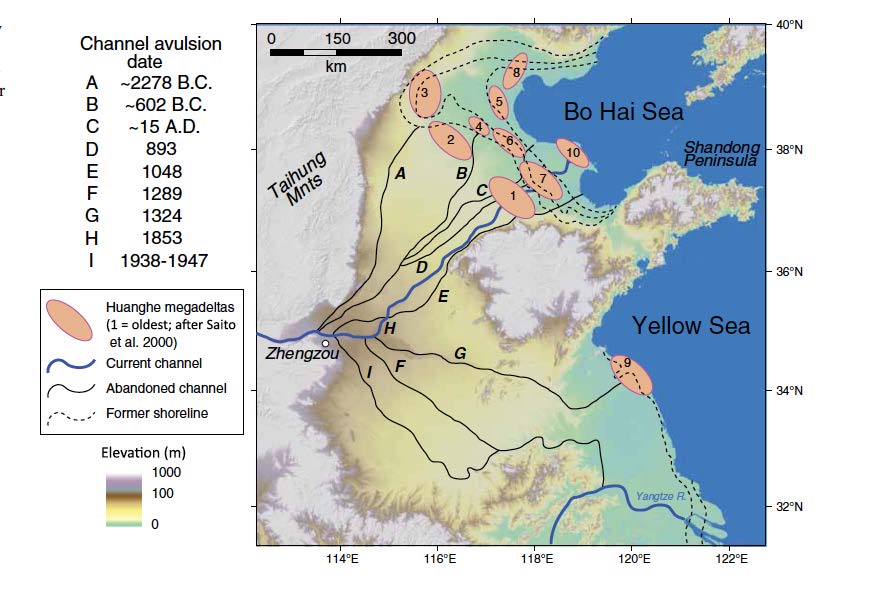In June 1938, Chinese Nationalist armies under the command of Chiang Kai-shek breached the Yellow River’s dikes at Huayuankou in Henan province in a desperate attempt to block a Japanese military advance.[1] For the next nine years, the Yellow River’s waters spread southeast into the Huai River system via its tributaries, inundating vast quantities of land in Henan, Anhui, and Jiangsu provinces. Perhaps the single most environmentally damaging act of warfare in world history.

In the affected counties in Henan, flooding reportedly inundated 45 percent of the villages. Over half the villages in eight of these counties were destroyed, with the total in Henan’s Fugou County reaching over 91 percent.[10] Wartime flooding killed well over 800,000 people and displaced nearly 4 million people in Henan, Anhui, and Jiangsu. In Anhui alone over 400,000 people died, while more than 325,000 people reportedly lost their lives in Henan. According to one postwar estimate, the civilian death toll in Henan’s flooded areas amounted to 4.8 percent of the prewar population. Estimated death rates reached as high as 25.5 percent in Henan’s Fugou County and 26.8 percent in Weishi County.

The wartime floods also turned almost four million people – over 20 percent of the total population – in Henan, Anhui, and Jiangsu into refugees. In Henan, the province for which the most detailed statistics are available, the Yellow River floods displaced more than 1,172,000. Refugees displaced by the floods came to 67.7 percent of the total population in Xihua, 55.1 percent in Henan’s Fugou County, 52.2 percent in Weishi County, 32.2 percent in Taikang County, and more than 10 percent in Zhongmu County.
For full paper, please read at: http://www.disasterhistory.org/yellow-river-flood-1938-47#more-383.
No comments:
Post a Comment